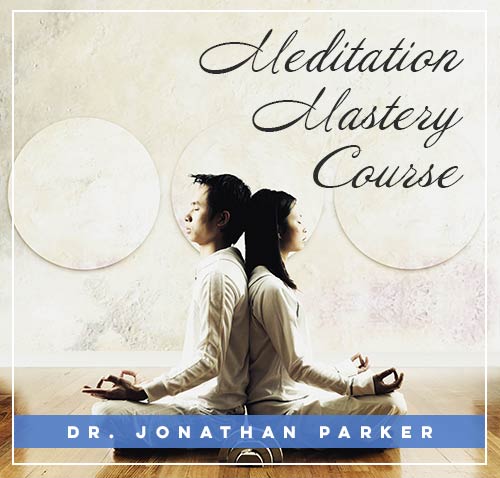Teaching Mindfulness to Children

Looking for more amazing products? Check out our online store and explore our collection here! Happy shopping!
Before diving in, please note: This post is for informational purposes only. If you’d like to know more about how we approach topics, feel free to check out our friendly Disclaimer Page.
Hey there, amazing readers! 
We’re committed to delivering quality posts, and your support (even just sticking around despite the ads) means everything to us. So, bear with us, and thanks for helping us keep the good vibes rolling. Now, on to the fun stuff!
TRANSLATE BUTTON AT THE END OF THE ARTICLE
Introduction: Teaching Mindfulness to Children
In today’s fast-paced world, teaching mindfulness to children has become increasingly important.
Mindfulness is the practice of being present in the moment, paying attention to thoughts and feelings without judgment.
By introducing mindfulness to children at a young age, we can help them develop essential skills for emotional regulation, focus, and resilience.
This article explores the benefits of mindfulness for children, how to introduce it to them, techniques and activities to teach mindfulness, and the role of parents and educators in fostering a mindful environment for children.
Let’s delve into the world of mindfulness and discover how we can help our children thrive in today’s hectic world.
What is Mindfulness and Why is it Important for Children?
Mindfulness is a practice that involves bringing one’s attention to the present moment.
It is about being aware of what is happening in the here and now without getting caught up in past regrets or future worries.
For children, mindfulness can help them develop emotional intelligence, self-awareness, and empathy.
It can also improve their ability to concentrate, manage stress, and regulate their emotions.
By teaching children mindfulness, we equip them with valuable tools to navigate life’s challenges with resilience and grace.
Benefits of Practicing Mindfulness at a Young Age
Introducing mindfulness to children at a young age has numerous benefits.
Research has shown that mindfulness practice can improve children’s cognitive skills, emotional well-being, and social relationships.
By cultivating mindfulness, children learn to respond thoughtfully rather than react impulsively to situations.
This leads to better decision-making, enhanced self-control, and increased empathy towards others.
Moreover, mindfulness can help children manage anxiety, stress, and even improve their academic performance.
By starting mindfulness practice early, we set children up for a lifetime of emotional and mental well-being.
How to Introduce Mindfulness to Children
Introducing mindfulness to children can be done in a variety of ways.
Start by explaining the concept of mindfulness in simple terms that children can understand.
Use age-appropriate language and examples to make it relatable.
Encourage children to practice mindfulness through activities like deep breathing, body scans, or mindful listening.
Create a safe and nurturing environment where children feel comfortable exploring their thoughts and emotions.
Model mindfulness yourself, as children learn best by observing and imitating adults.
Remember to be patient and allow children to progress at their own pace.
Techniques and Activities to Teach Mindfulness
There are numerous techniques and activities that can help teach mindfulness to children.
Some popular options include:
Mindful Breathing: Encourage children to focus on their breath, noticing the sensation of air entering and leaving their bodies.
Mindful Coloring: Provide children with coloring sheets and ask them to color mindfully, paying attention to the colors and movements of their hands.
Mindful Walking: Take children on a mindful walk, encouraging them to notice the sights, sounds, and sensations around them.
Mindful Eating: Have children eat a snack slowly and mindfully, paying attention to the taste, texture, and smell of the food.
Mindful Storytelling: Read a story to children and ask them to listen mindfully, focusing on the characters, plot, and emotions in the story.
Incorporating these activities into a child’s daily routine can help make mindfulness a natural and enjoyable practice.
Incorporating Mindfulness into Daily Routine
To make mindfulness a regular part of children’s lives, it is essential to incorporate it into their daily routine.
Set aside dedicated time each day for mindfulness practice, whether it’s in the morning before school, during a break, or before bedtime.
Encourage children to practice mindfulness during moments of stress or overwhelm, as a way to calm their minds and refocus their attention.
Create a peaceful and inviting space for mindfulness practice, free from distractions and noise.
By weaving mindfulness into their daily routine, children can develop a strong foundation for emotional well-being and resilience.
Overcoming Challenges in Teaching Mindfulness to Children
While teaching mindfulness to children can be rewarding, it also comes with its challenges.
One common obstacle is children’s short attention spans, which can make it difficult for them to stay engaged in mindfulness practices.
To overcome this, keep mindfulness activities short, varied, and interactive to maintain children’s interest.
Another challenge is resistance from children who may find mindfulness unfamiliar or uncomfortable.
In such cases, approach mindfulness with patience, understanding, and a non-judgmental attitude.
By addressing challenges with creativity and flexibility, we can help children embrace mindfulness as a valuable tool for mental and emotional well-being.
The Role of Parents and Educators in Teaching Mindfulness
Parents and educators play a crucial role in teaching mindfulness to children.
By modeling mindfulness themselves, adults can demonstrate its importance and value to children.
Parents can create a mindful environment at home by practicing mindfulness together as a family and incorporating mindful activities into daily routines.
Educators can introduce mindfulness in the classroom through short mindfulness exercises, mindful storytelling, or guided meditations.
By working together, parents and educators can create a supportive and nurturing environment that encourages children to embrace mindfulness as a lifelong practice.
Creating a Mindful Environment for Children
Creating a mindful environment for children involves cultivating a space that promotes calm, focus, and self-awareness.
Start by creating a designated mindfulness corner in the home or classroom, equipped with cushions, blankets, and calming decorations.
Use soft lighting and soothing colors to create a peaceful atmosphere that is conducive to mindfulness practice.
Encourage open communication and emotional expression, so children feel comfortable sharing their thoughts and feelings.
Foster a sense of community and connection by practicing mindfulness together as a group.
By creating a mindful environment, we can help children feel safe, supported, and empowered to explore their inner world.
Addressing Common Misconceptions about Mindfulness
There are several common misconceptions about mindfulness that can hinder its adoption by children.
One misconception is that mindfulness is only for adults and does not have any relevance for children.
In reality, children can benefit greatly from mindfulness practice, as it helps them develop important skills for emotional regulation and mental well-being.
Another misconception is that mindfulness is a religious practice, which may deter some parents or educators from introducing it to children.
However, mindfulness is a secular practice that can be taught in a non-religious context, making it accessible to children of all backgrounds.
By addressing these misconceptions and providing accurate information about mindfulness, we can help children and adults alike embrace its benefits.
Tracking Progress and Success in Teaching Mindfulness
Tracking progress and success in teaching mindfulness to children is essential for measuring the impact of mindfulness practices.
Keep a journal or log of children’s experiences with mindfulness, noting any changes in their behavior, emotions, or focus.
Ask children to reflect on their mindfulness practice and share how it has helped them in their daily lives.
Seek feedback from parents, teachers, or caregivers on the impact of mindfulness on children’s well-being.
By tracking progress and success, we can identify areas of improvement, celebrate achievements, and make adjustments to ensure that mindfulness continues to benefit children in meaningful ways.
Resources for Further Learning and Support in Teaching Mindfulness to Children
For parents and educators looking to deepen their knowledge and skills in teaching mindfulness to children, there are numerous resources available.
Consider attending workshops, seminars, or training programs on mindfulness and child development.
Explore books, websites, and online courses that provide guidance on teaching mindfulness to children.
Connect with other parents and educators who are also interested in mindfulness, to share ideas and best practices.
Utilize apps and online platforms that offer guided meditations, mindfulness activities, and resources for children.
By investing in further learning and support, parents and educators can enhance their ability to teach mindfulness effectively and help children thrive in today’s complex world.
Conclusion
Teaching mindfulness to children is a valuable investment in their mental, emotional, and social well-being.
By introducing mindfulness at a young age, we equip children with essential skills for navigating life’s challenges with resilience and grace.
Through techniques and activities that promote mindfulness, creating a mindful environment, and involving parents and educators in the process, we can help children develop the tools they need to thrive in today’s fast-paced world.
By addressing common misconceptions, tracking progress, and seeking further learning and support, we can ensure that mindfulness continues to benefit children in meaningful ways.
Let’s empower our children with the gift of mindfulness and watch them flourish into confident, compassionate, and resilient individuals.

The Enlightenment Journey is a remarkable collection of writings authored by a distinguished group of experts in the fields of spirituality, new age, and esoteric knowledge.
This anthology features a diverse assembly of well-experienced authors who bring their profound insights and credible perspectives to the forefront.
Each contributor possesses a wealth of knowledge and wisdom, making them authorities in their respective domains.
Together, they offer readers a transformative journey into the realms of spiritual growth, self-discovery, and esoteric enlightenment.
The Enlightenment Journey is a testament to the collective expertise of these luminaries, providing readers with a rich tapestry of ideas and information to illuminate their spiritual path.
Our Diverse Expertise
While our primary focus is on spirituality and esotericism, we are equally passionate about exploring a wide range of other topics and niches 

To ensure we provide the most accurate and valuable insights, we collaborate with trusted experts in their respective domains 
Our blog originally focused on spirituality and metaphysics, but we’ve since expanded to cover a wide range of niches. Don’t worry—we continue to publish a lot of articles on spirituality! Frequently visit our blog to explore our diverse content and stay tuned for more insightful reads.
Hey there, amazing reader! 
Check out our store here and take a peek at some of our featured products below! Thanks for being awesome!











